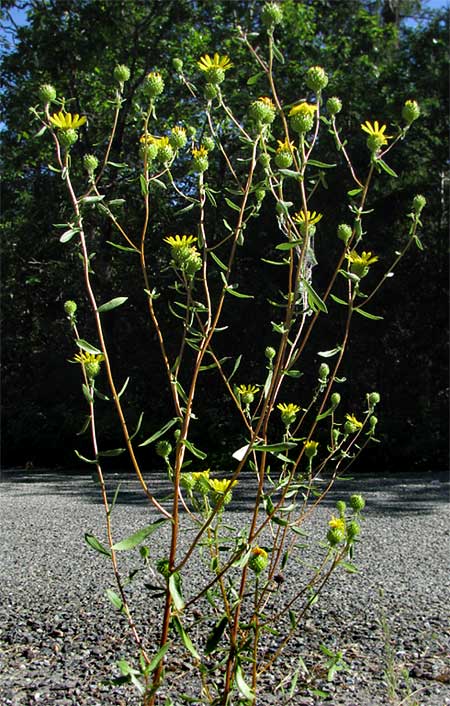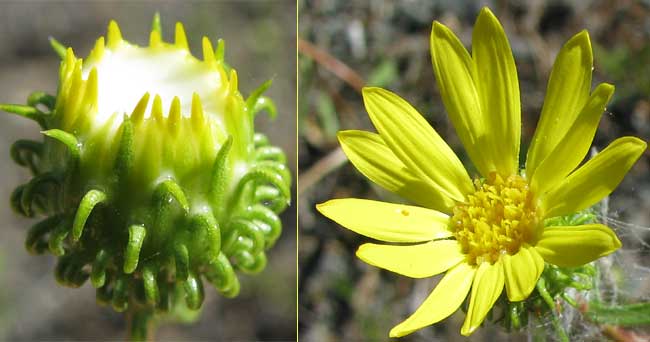Excerpts from Jim Conrad's
Naturalist Newsletter
from the August 2, 2009 Newsletter, issued from the Siskiyou Mountains west of Grants Pass, Oregon:
IDAHO GUMWEED
Nowadays a yellow-flowered Composite Family member flowering along weedy roadsides is so similar to many other yellow-flower Composites that most people never give it a second look. That's it below:

However, if you look closely at an immature flower head you'll see something very strange, as shown below:

In that picture, at the left, the green, curled-back bracts, or phyllaries, forming the flower head's lower parts are pretty unusual because they are so slender and curled-back, but what's amazing is the copious, white latex filling the head's "cup." All the immature, green flower heads on any given plant of this species are absolutely gummy with this sticky latex. As the heads open and the yellow disk and ray flowers expand, the latex disappears, until finally the head looks "normal" like the head at the right -- though the curled-back phyllaries are still very striking.
This is one of 18 gumweed species listed for North America, GRINDELIA SQUARROSA*. During my 2005 stay in California's Sierra Nevadas we ran into Grindelia hirsutula, which struck me as even gummier than this species. You may be interested in comparing the current one with that one, Grindelia hirsutula.
Back then my friend Fred told me how local folks there filled jars with gumweed heads and alcohol, and used the resulting lotion as a treatment for Poison Oak.
Sometimes I find small insects mired in the latex, dying. I can't find anyone explaining why the plant produces such large amounts of latex. Maybe it's just to keep insects from eating the flowers or laying eggs among them, or maybe there's no reason at all, it just happens.
There's research showing that species of Grindelia may make a good crop for planting in arid lands because their latex is chemically similar to "extractable diterpene resin acids" from which turpentine and other important chemicals are derived.